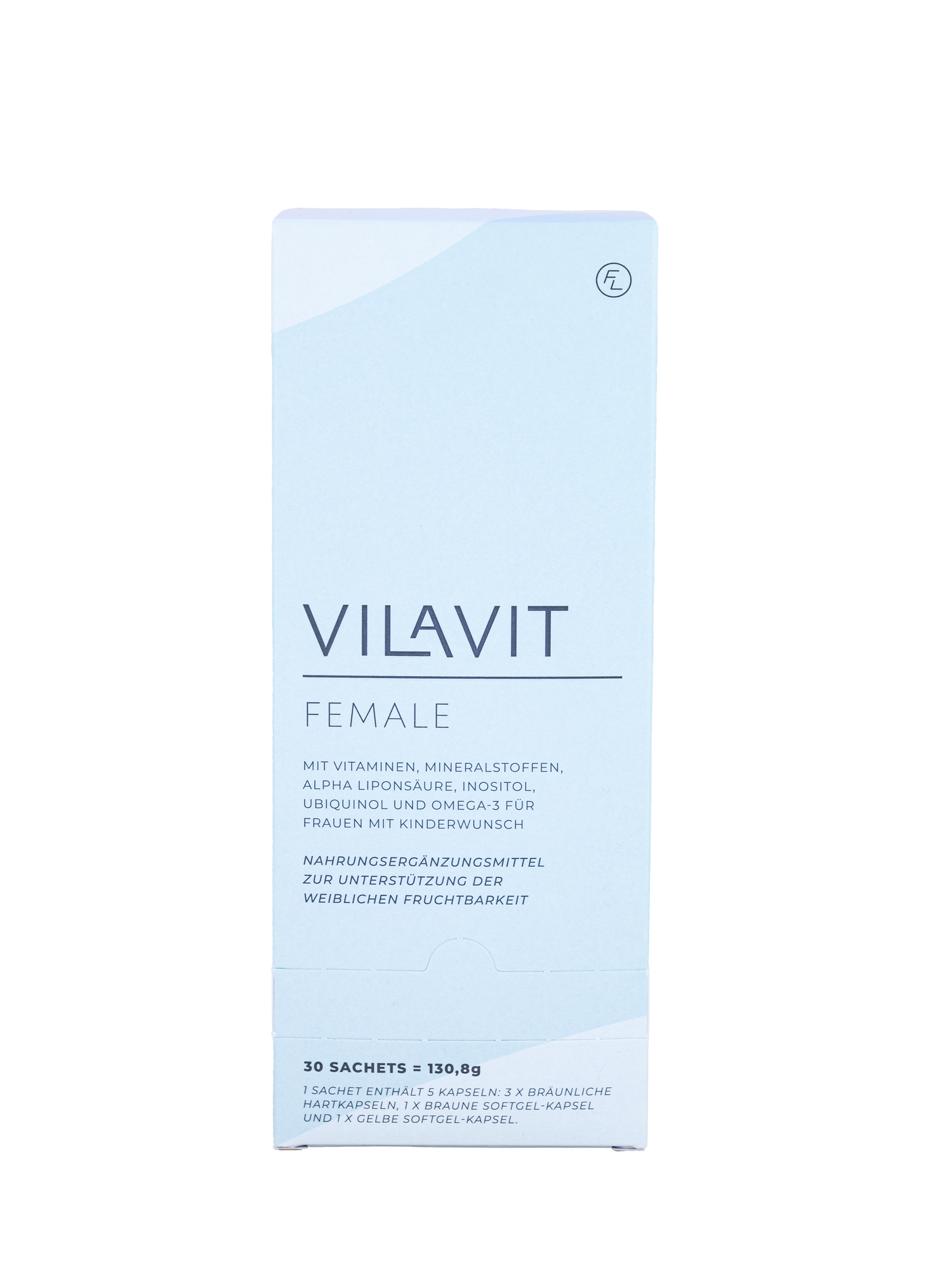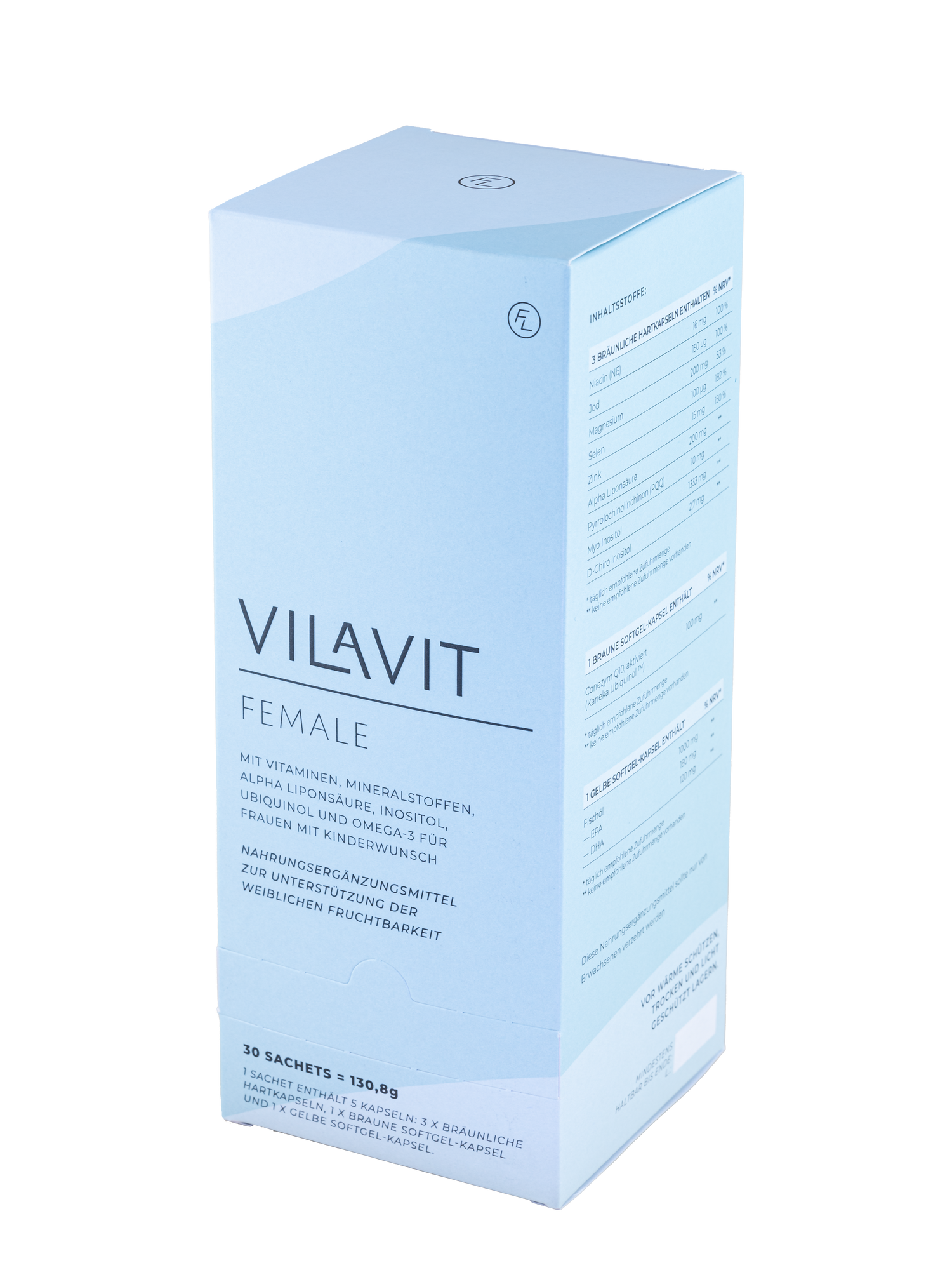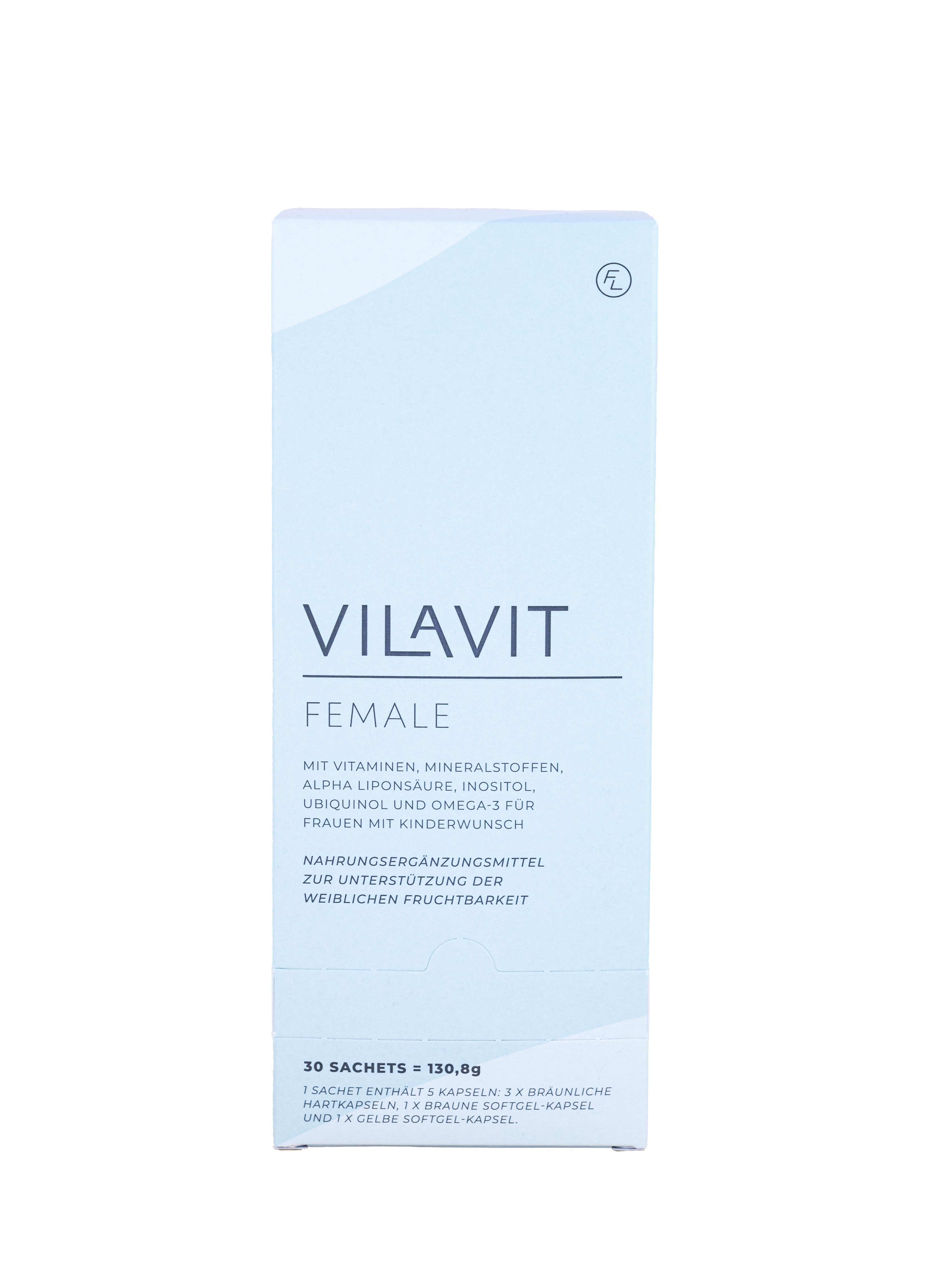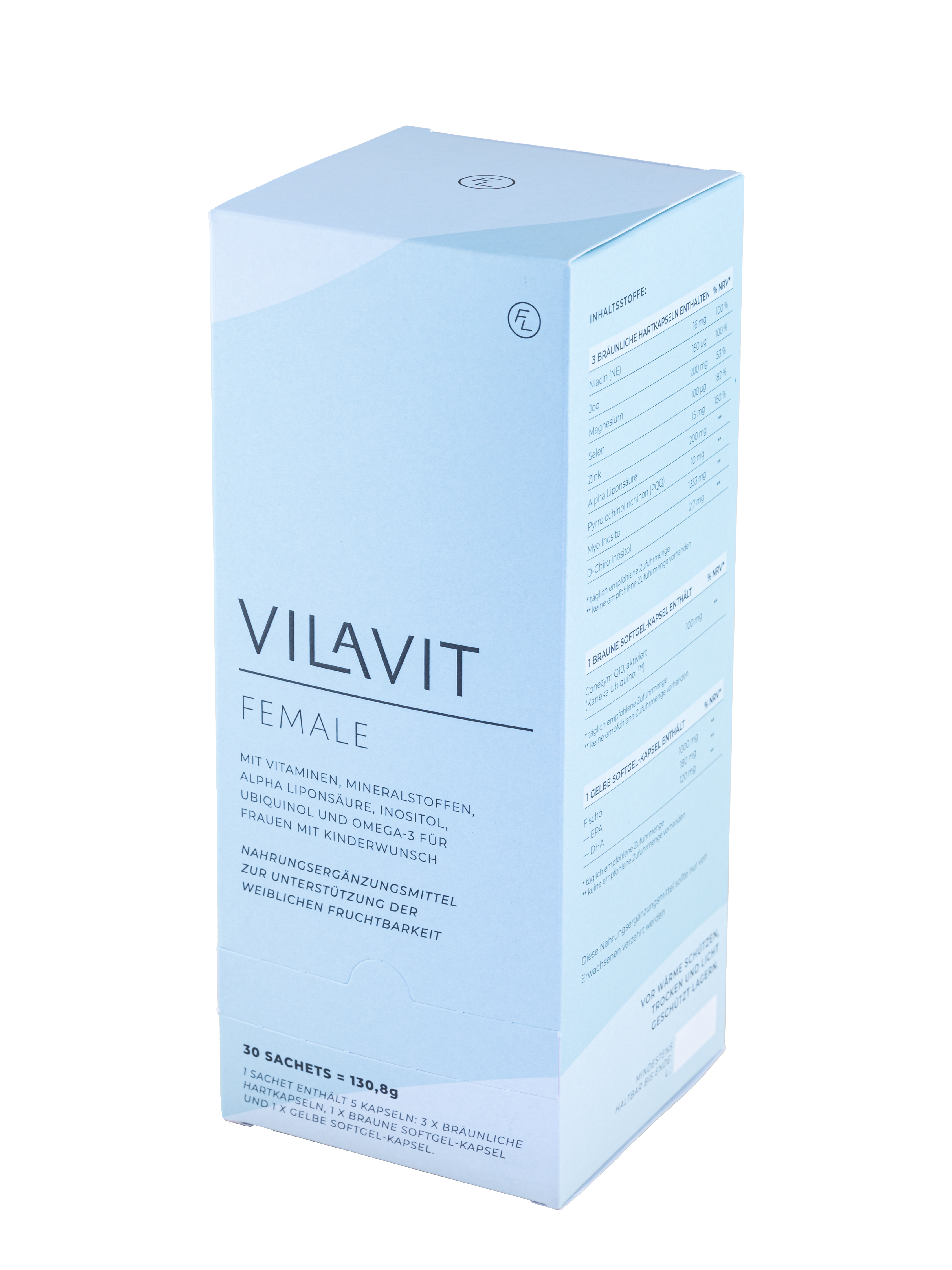In today's world, many women wonder, "Can I still get pregnant?" This question is particularly relevant for women who decide to have children later in life.
One of the most important indicators in this context is the Anti-Müllerian Hormone (AMH) level. This value, determined by measuring the AMH level in the blood, serves as an indicator of a woman's ovarian reserve and can provide important information on whether a natural pregnancy is possible or if assisted reproductive techniques like in-vitro fertilization (IVF) should be considered.
What is the AMH level and why is it important?
A low AMH level may suggest a reduced ovarian reserve, meaning fewer eggs are available and the likelihood of pregnancy may be decreased.
Women who smoke generally have a lower AMH level compared to non-smokers.
The Ovarian Reserve
The ovarian reserve of a woman, which refers to the number of eggs available to her, is determined before birth.
|
Stages of life |
Number of eggs |
|
Conception (20th week of pregnancy) |
Approx. 7 million eggs per ovary |
|
Birth |
1 - 2 Millionen eggs in total |
|
Start of menstruation: |
300.000 - 400.000 eggs in total. |
From puberty onwards, up to 1,000 follicles mature each month, but only the largest and most dominant is released during ovulation. The remaining eggs degenerate. This process repeats about 300-500 times in a woman's life.
AMH-Levels with Age
As a woman ages, her ovarian reserve decreases, and consequently, her AMH levels also decline. The most significant decline typically occurs from around age 36, although some women may have a reduced ovarian reserve even earlier.

Menopause begins when there is a very small number of non-viable eggs left, and menstruation stops.
Menopause occurs at varying ages for different women, usually around age 50, but sometimes as late as 60. If menopause begins before the age of 40, it is considered premature menopause (premature ovarian insufficiency).
Causes of Low AMH Levels
A low AMH level can have various causes. Here are some possible reasons:
-
Age: The most common reason for low AMH levels is advancing age, as ovarian reserve decreases with age.
-
Early Menopause: Some women experience premature menopause, where ovarian reserve is depleted earlier than usual.
-
Genetic Factors: Genetic conditions or hereditary factors, such as Turner syndrome, can affect ovarian reserve.
-
Autoimmune Diseases: Conditions where the immune system mistakenly attacks the body's own tissues, such as autoimmune ovarian syndrome, can damage the ovaries and lead to lower AMH levels.
-
Ovarian Insufficiency: Reduced ovarian function due to various reasons, including certain medical treatments or diseases, can affect AMH levels.
-
Cancer Treatments: Chemotherapy or radiation for cancer can impact ovarian reserve and lower AMH levels.
-
Ovarian Surgery: Surgical procedures on the ovaries, such as the removal of cysts or tumors, can influence ovarian reserve.
-
Polycystic Ovary Syndrome (PCOS): Some women with PCOS may have higher AMH levels, but others might develop reduced ovarian reserve.
-
Lifestyle and Environmental Factors:
- Body Mass Index (BMI): There is an inverse association between AMH levels and BMI; higher BMI values are generally associated with lower AMH levels.
- Smoking: Current smokers have AMH levels that are 44% lower compared to non-smokers.
- Birth Control Pills: Users of birth control pills have AMH averages that are 42% lower. After stopping contraceptives, AMH levels increase by 53% within three months.
- Endocrine Disruptors: Endocrine disruptors such as phthalates and BPA can also negatively affect egg reserve.
Significance of AMH Levels in Reproductive Medicine
The AMH level is an important indicator in reproductive medicine, particularly for determining the appropriate dosage for hormonal stimulation.
Studies have identified a correlation between AMH levels and the ovarian response to hormonal stimulation. Patients with high AMH levels may be at a higher risk of ovarian hyperstimulation, while patients with low AMH levels are likely to show a weaker response.(2)
Can the AMH Level be Improved?
The AMH level is generally considered stable and is primarily influenced by genetic factors and age. Unfortunately, there are no specific methods to improve AMH levels directly. However, certain lifestyle changes and the intake of micronutrients can help enhance overall fertility and improve egg quality.
Ways to Promote Fertility
For women with a low ovarian reserve, there are various steps they can take to improve their chances of pregnancy:
Healthy Lifestyle
A healthy diet, regular exercise, and avoiding harmful habits like smoking and excessive alcohol consumption can help improve overall health and support fertility.
Micronutrients
High-quality micronutrients such as Coenzyme Q10 in the form of Ubiquinol, DHA (Docosahexaenoic Acid) from Omega-3 fatty acids, and antioxidants like Alpha-Lipoic Acid, NAC (N-Acetyl-Cysteine), and Selenium have been shown in clinical studies to positively affect egg and embryo quality.
In-Vitro Fertilization (IVF)
Women with a low AMH level can benefit from fertility treatments such as in-vitro fertilization (IVF). During IVF, eggs are retrieved from the ovaries, fertilized outside the body, and then implanted into the uterus.
If the Anti-Müllerian Hormone level is very low (below 1.0 ng/ml), higher doses of hormones may be required during stimulation.
Egg Donation as an Option
In some cases, egg donation may be an option, especially if the woman's own ovarian reserve is very low. In egg donation, eggs from another woman are used to achieve pregnancy.
AMH Level as an Important Indicator of Fertility
The AMH level is a crucial indicator of a woman's ovarian reserve and can provide important information to reproductive medicine on whether a natural pregnancy is possible or if assisted reproductive techniques should be considered. For women with a low AMH level, an appointment at a fertility clinic can be an important next step to identify suitable treatment options. Despite a low AMH level, there are ways to achieve the dream of having a family.
Frequently Asked Questions (FAQs)
Can AMH levels increase from one test to the next?
While AMH levels are generally considered one of the more reliable parameters, they can vary from one test to another. Significant increases are rare and typically not indicative of a real increase in ovarian reserve.
Possible reasons for fluctuations in AMH levels include:
- Measurement Variability: Laboratory methods and tests can differ in their results. Different labs or testing methods may produce slightly varying values.
- Cycle Timing: Although AMH levels are generally less variable than other hormonal markers, they can still change over the menstrual cycle.
- Factors such as Smoking and Illnesses: These can also impact AMH levels. Changes in these factors might cause temporary fluctuations in AMH levels.
- Seasonal Variations: Some studies have noted seasonal differences in AMH levels, but these are usually minor.
It's important to interpret AMH levels alongside other diagnostic information, such as ultrasound assessment of antral follicle count, to get an accurate picture of ovarian reserve.
Can I get pregnant with a low AMH level?
Yes, it is possible to become pregnant with a low AMH level, but it may be more challenging. A low AMH level indicates a reduced ovarian reserve, meaning that the number of available eggs in the ovaries is lower. This can affect fertility, but it does not necessarily make pregnancy impossible.
References

















